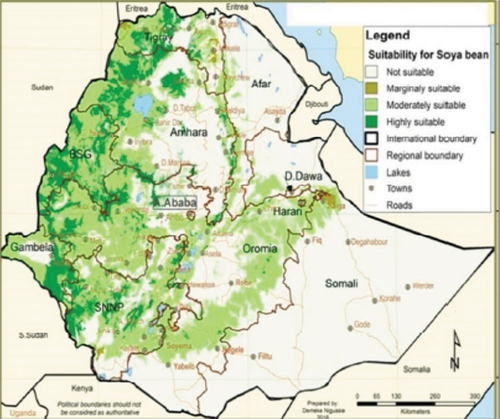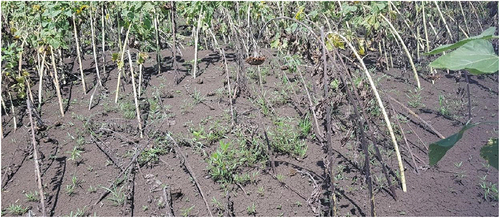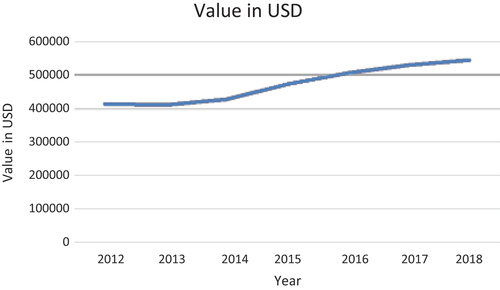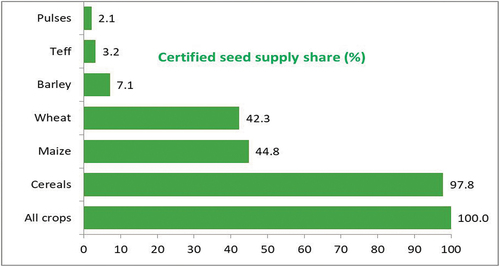Figures & data
Figure 1. A/Total production of grain crops, B/productivity of cereals (Maize and Wheat), pulses (Faba Bean) and oilseed (Noug) (CSA, Citation2010–2020) and C/productivity of seed and oil yield for some oilseeds (Alemaw, Citation2013).

Table 1. Number of oilseed varieties released in Ethiopia
Table 2. Seed yield of sesame in quental/ha under three moisture regmes
Table 3. Summary of seed yield in q/ha of two groundnut varieties Shulamith and NC-4× under three moisture regimes
Table 4. Seed yield, oil and protein content of released soybean varieties
Table 5. Oil content and fatty acid composition of Ethiopian oil seeds
Figure 3. Suitable areas of soybean in Ethiopia (Demeke, Citation2018).

Figure 4. Wilt on sunflower crop planted after cotton at Gende Woha Metema Woreda in West Gonder Zone in 2020.



